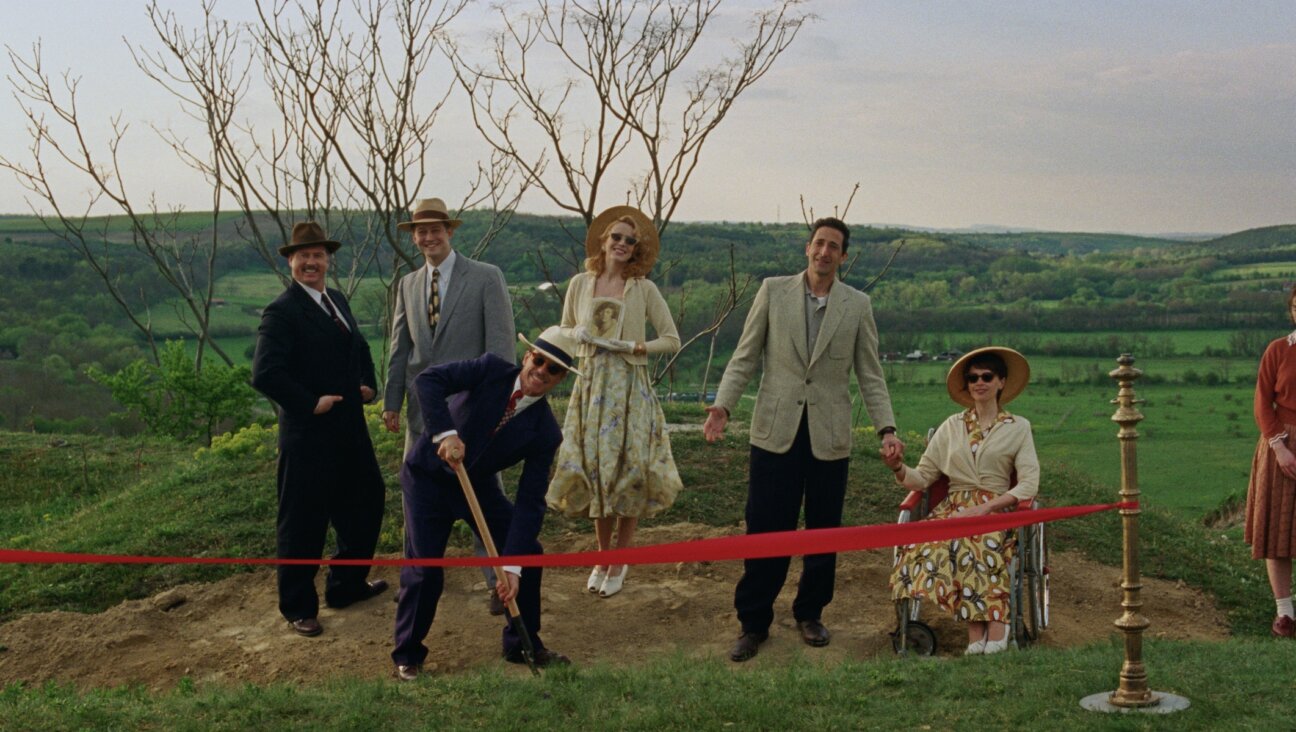Grimm Dioramas for Young and Old

Courtesy Tine Kindermann/NY Studio Gallery
When Tine Kindermann was a little girl, she thought all Americans liked to dress up as trees. Patrolling her city in West Germany after the Holocaust, camouflaged soldiers would wear leaves as part of their uniforms.

Courtesy Tine Kindermann/NY Studio Gallery
Now, after 20 years living in the United States, Kindermann has let us peep into secret worlds, juxtapositions of innocence and horror, childhood fear and fantasy, based on the German Grimm Brothers’ “Nursery and Household Tales” — the stories with which she, over there, and we, over here, grew up.
Kindermann’s exhibit “Rated: Grimm,” which ran until October 23 at the NY Studio gallery, featured dioramas made from drawers and crates salvaged from the streets of the Lower East Side. Her figurines are dead-white, beautifully sculpted and precisely placed into deceptively spare surroundings. Each moment, Kindermann says, was chosen “before the climax of the story — the time of terrible stillness, time stopping for a heartbeat.”
The beautiful young wife is left alone in the castle. She has keys to every room but has been warned by her powerful husband not to enter the top of the tower — another Eve in the Garden of Eden. We look through the peephole at the maiden the moment before her husband discovers her transgression — the tiny key in a bloody pool by her feet.
Bruno Bettelheim, the great Austrian-American child psychologist who was himself a survivor of Dachau and Buchenwald, said that fairy tales have overt and covert meanings, “communicating in a manner which reaches the uneducated mind of a child as well as that of the sophisticated adult.” He believed that they were important in conveying the advantages of moral behavior.
Folk and fairy tales were often used to warn children against dangers out there in the world, or the scary German woods. And yet — do we applaud when Gretel finally pushes the old witch into the oven? As Jews, do we applaud?
From Art Spiegelman’s “Maus,” to Roberto Innocenti’s “Rose Blanch” (a Little Red Riding Hood that runs into the woods to give provisions to concentration camp inmates) to the newest take on “Genesis” by R. Crumb, artists have harnessed the power of childhood memory, imagery and fear to educate and to shock.
The dark brilliance of Kindermann’s tiny works is most extraordinary for the way in which it allows you to see certain moments as you saw them as a child, and to experience them as an adult, at exactly the same time.
A message from our Publisher & CEO Rachel Fishman Feddersen

I hope you appreciated this article. Before you go, I’d like to ask you to please support the Forward’s award-winning, nonprofit journalism so that we can be prepared for whatever news 2025 brings.
At a time when other newsrooms are closing or cutting back, the Forward has removed its paywall and invested additional resources to report on the ground from Israel and around the U.S. on the impact of the war, rising antisemitism and polarized discourse.
Readers like you make it all possible. Support our work by becoming a Forward Member and connect with our journalism and your community.
— Rachel Fishman Feddersen, Publisher and CEO























